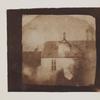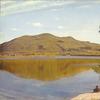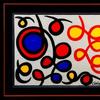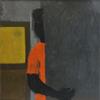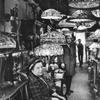CHRISTIE’S TO OFFER EXCEPTIONAL WORKS OF JAPANESE AND KOREAN ART ON SEPTEMBER 18
- NEW YORK, New York
- /
- September 16, 2013
New York – On 18 September, Christie’s will present the fall sale of Japanese and Korean Art, which will feature over 300 lots of exceptional craftsmanship and provenance. An exquisite 16th-17th century six-panel Nanban screen depicting a Portuguese trading ship will highlight the Japanese portion of the sale, while the Korean portion offers a selection of blue and white porcelain and modern master Kim Whanki’s Island Sketches.
JAPANESE ART
Highlighting the Japanese portion of the sale is a six-panel Nanban screen from the late 16th to early 17th century, titled A Portuguese Ship Comes to Trade (Lot 633; estimate: $700,000-900,000). The screen depicts a Portuguese nau, which was known to the Japanese as the kurofune (black ship) or nanban bune (ship of the Nanban). The subject matter of foreigners who arrived from the south, or “Southern Barbarians” fascinated the Japanese, and numerous versions were created by professional paintings ateliers in Kyoto. Nanban screens such as this one were so popular that they were ranked second only to screens depicting Scenes In and Around the Capital. Two similar screens can be found in Japan’s Nagasaki Museum of History and Culture.
Also among the Japanese highlights are twelve newly discovered paintings for an accordion album, which are made of lacquer on paper and lacquer and gold leaf on paper (Lot 690; estimate: $120,000-180,000). Each painting is signed Zeshin, sealed Koma, Zeshin, Shin, or Tairyukyo. The box is signed, sealed and authenticated by Umezawa Ryushin (1874-1952), the youngest of Zeshin’s three sons, and by Ayaoka Yushin (1846-1910), one of Zeshin’s students. These paintings feature landscapes, plant, and animal studies and it is possible that they correspond to the twelve months. Considering date, quality, and style, the album for which these paintings were made closely resembles the album with lacquer paintings in the Imperial Household Collection, which was purchased in 1881 at the National Industrial Exposition.
Two square earthenware dishes (Lot 523; estimate: $100,000-150,000) featuring pine tree designs were created during the 18th century Edo period, one of which is painted with a grove of pines beneath a poem. Signed Kenzan sei sho and sealed Kenzan and Sei sho, this dish is likely by Kenzan’s hand, or by that of his brother, Korin. The second dish, featuring a moss-covered pine tree, is inscribed with a date in the spring of 1711, marking the end of the period during which Ogata Kenzan operated his kiln in the hills in the northwestern suburbs of Kyoto. Dated Kenzan ware are very rare and there is only one other square dish with a similar date, which resides in a private collection in Japan.
KOREAN ART
Leading a selection of Korean porcelain is a blue and white porcelain brush holder from the 18th – 19th century Joseon dynasty (Lot 825; estimate: $150,000-180,000). This brush holder painted in cobalt blue with budding and blossoming plum boughs, bamboo and orchids is an elegant example of Korean artistic mastery. Also among the Korean porcelain highlights is a vividly painted ovoid-shaped jar, which depicts two animated tigers beneath a gnarled pine tree (Lot 818; pictured page 5, upper right; estimate: $40,000-60,000).
Kim Whanki’s Island Sketches (Lot 851; estimate: $600,000-800,000) evokes the figures, vivid colors, and imagery of the artist’s birthplace – the island of Anjado, off the southernmost coast of Korea. Similar in composition to the artist’s Island Story, the oil on canvas repeats the forms of village women carrying jars of precious fresh water on their heads and the semicircles surrounding the scene symbolize the waves of the sea. Island Sketches was executed earlier in the artist’s career, around 1940, after Kim had begun experimenting with abstraction and approximately three years following his first solo show, which was held at the Amagi gallery in Japan. Over the past 70 years, Kim’s reputation as a modern master has been cemented, with his work having been shown continuously in the Americas, Europe and East Asia, including two special exhibitions at the São Paulo Biennale in 1965 and 1977 and retrospectives on the tenth, fifteenth, twentieth, twenty-fifth and thirtieth anniversaries of his death in 1974.
Also among the modern Korean highlights of the sale is Two Figures by Kim Sou (Lot 839;estimate: $8,000-12,000), one of a small number of Korean artists who were able to travel to Paris in the 1950s. It was here that he broke from realism and began to gain traction is abstractionism. The resulting style is exemplified in Two Figures and was dubbed by Kim as Harmonism, likening it to the dualities of existence and aesthetics.




10270x400_c.jpg)








